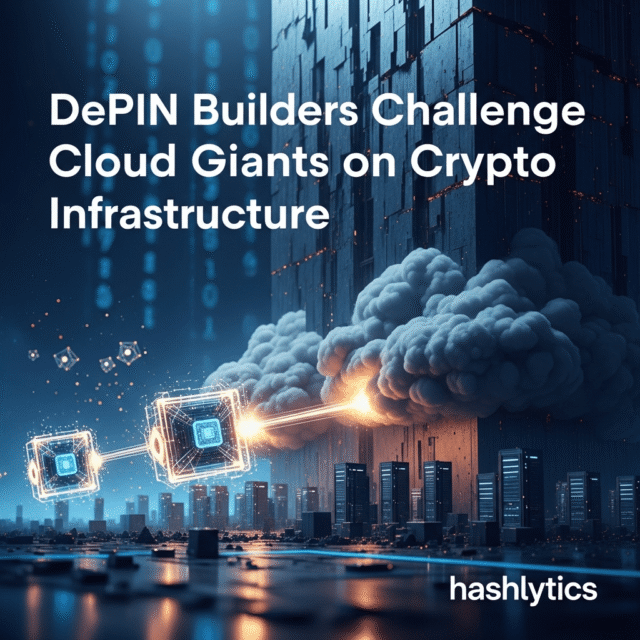The titans of cloud computing – AWS, Azure, Google Cloud – have reigned supreme for years, but a quiet rebellion is brewing. Decentralized Physical Infrastructure Networks (DePINs) are emerging as credible contenders, offering a tantalizing promise: resilience against the single points of failure that plague even the mightiest centralized systems. Can these upstarts truly challenge the cloud giants, and what does it mean for the future of AI, gaming, and finance?
Periodic outages and capacity constraints on these centralized platforms have opened the door for innovation. DePIN advocates argue that distributing workloads across numerous smaller nodes significantly reduces risk, especially in sectors demanding high uptime and intense computing power.
In 2024, Amazon Web Services (AWS), Microsoft Azure, and Google Cloud controlled roughly 68% of global cloud infrastructure revenue, according to Synergy Research Group. This dominance makes them the default choice for many enterprises, including those building blockchain applications. But this concentration also creates a systemic vulnerability.
As Nökkvi Dan Ellidason, CEO of Gaimin, pointed out, the AWS outage in October 2023 crippled major platforms like Snapchat, Roblox, Fortnite, and even financial services like Coinbase. The internet held its breath, highlighting the fragility of relying on a few centralized providers.
The Trade-off: Cost vs. Resilience
The “Big Three” offer attractive upfront cost savings, particularly for startups. Moving away from these platforms means taking on the setup and maintenance responsibilities they’ve handled for years, often at a higher initial cost. This is a significant hurdle for many companies.
Despite the challenges, a growing number of organizations are exploring alternative approaches through “modular shifts.” Solutions like Filecoin and Arweave are being leveraged for decentralized data storage, while Akash and Render Network offer distributed computing and GPU rendering options.
“With outages to AWS in October and Azure in November, we’re going to see big companies partly move services to more resilient networks. They might still stay in AWS but move storage first and then maybe AI after.” – Nökkvi Dan Ellidason, CEO of Gaimin
Blockchain networks, designed to distribute trust and eliminate single points of failure, ironically often rely on the very centralized cloud infrastructure they aim to supplant. Many validators on major proof-of-stake networks run on commercial cloud platforms rather than independent hardware.
A study presented at the Usenix Security Symposium revealed that Amazon Web Services was the largest hosting provider among Ethereum validators, accounting for roughly one in five. This dependence, often invisible to end-users, becomes painfully apparent during outages.
Carlos Lei, CEO and co-founder of Uplink, explains that centralized cloud platforms like AWS or Google Cloud offer predictable performance, easy setup, and reliable uptime. “These platforms have become the backbone for many Web3 networks because they simplify the complexities of scaling and maintaining infrastructure.”
The growing strain on centralized cloud systems is driving a new wave of infrastructure projects to explore distributed alternatives. These networks aim to harness capacity from consumer hardware, regional data centers, and otherwise idle computing power.
Gaimin, for example, sources GPU power from gaming PCs and supplements it with smaller regional data centers, creating a geographically dispersed network. Uplink takes a similar approach to bandwidth, allowing individuals and local operators to sell excess connectivity to applications needing more coverage, reducing reliance on major telecom carriers.
The future likely lies in hybrid models – a blend of hyperscalers, edge networks, and bare-metal servers, with traffic automatically rerouted when one region experiences downtime. Yair Cleper, co-founder of Magma Devs and a contributor to Lava Network, believes that “Cloud doesn’t go away; its elasticity is critical. Teams can start simple and add diversity as the business demands, without needing a rebuild.”
As demand for computing power continues to outpace cloud capacity, the shift isn’t about abandoning AWS or its peers. Instead, it’s about building a more fault-tolerant system and creating opportunities for smaller, regional infrastructure providers to fill the gaps where massive data centers fall short. This evolution could reshape the landscape of cloud computing, fostering greater resilience and decentralization in the years to come.


